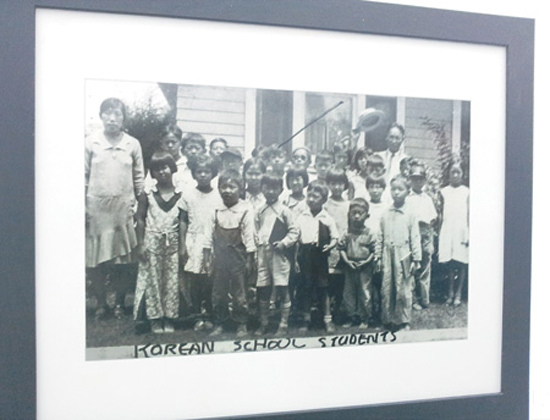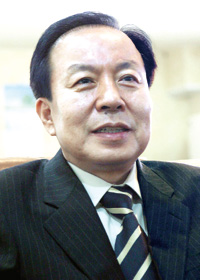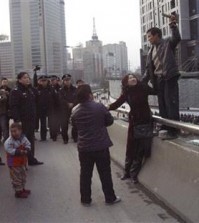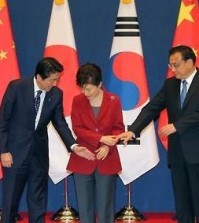- California Assembly OKs highest minimum wage in nation
- S. Korea unveils first graphic cigarette warnings
- US joins with South Korea, Japan in bid to deter North Korea
- LPGA golfer Chun In-gee finally back in action
- S. Korea won’t be top seed in final World Cup qualification round
- US men’s soccer misses 2nd straight Olympics
- US back on track in qualifying with 4-0 win over Guatemala
- High-intensity workout injuries spawn cottage industry
- CDC expands range of Zika mosquitoes into parts of Northeast
- Who knew? ‘The Walking Dead’ is helping families connect
Professor preserving legacy of emigrants

Korean children pose at a Korean language school based in Los Angeles in this photo taken in 1930. Ahn Hyung-joo, a Korean emigrant, donated this picture for a photo exhibition at the Kim Dae-jung Convention Center in the southwestern city of Gwangju. (Courtesy of Ahn Hyung-jo)
By Kang Hyun-kyung
A photo exhibition featuring the lives of early Korean emigrants overseas opened Tuesday at Kim Dae-jung Convention Center located in the southwestern city of Gwangju.
Professor Lim Chae-wan of Chonnam National University, who has been researching the Korean Diaspora overseas since 1991, organized the photo presentation project.
“I felt the urge to hold such an event as plenty of valuable, historic photos showing the developments of Korean Diaspora were stuck in a library and my research room. While databasing these materials, my colleague and I concluded that a photo exhibition could be a powerful presentation to show how early emigrants had lived in foreign lands,” Lim said during an interview.
Lim said he sent groups of experts to the United States, Japan, China, Russia and other former Soviet Union areas to gather antique photos for the three-day event.
Among hundreds of photos collected, Lim and his colleagues selected nearly 200 pieces of photos for the exhibition.
“Some of them were taken more than a century ago. These photos are not only historically significant but also pieces of evidence showing the tough lives facing early Korean emigrants in foreign territories,” said Lim.
Among the 200 photos showcased at the exhibition is a copy of a passport issued by the then Korean Empire, the official name of the Korean government which was used from 1897 to 1919.
In this photo taken in 1904, the actual name of the government was written as The Imperial Japanese Government, showing that Korea was under the influence of Japan even before it was officially annexed.
Another old photo featured a group of young students attending a Korean language school based in Los Angeles. The students are second generation of the early Korean emigrants to the United States.
Since the first wave of Korean emigration began in the mid-19th century, the population of Korean emigrants has risen sharply. There are currently nearly 7 million Koreans living in 175 countries.
Prof. Lim said the early emigrants moved abroad in search of better opportunities because of domestic economic hardships back then. Some decided to leave their homeland following Japan’s annexation, he said.
“It is no surprise that early immigrants faced a harsh reality in foreign lands as they suffered discrimination there. But their challenging mind and diligence made them succeed in their areas of specialization. Korean emigrants wrote a history there.” Lim said.
















